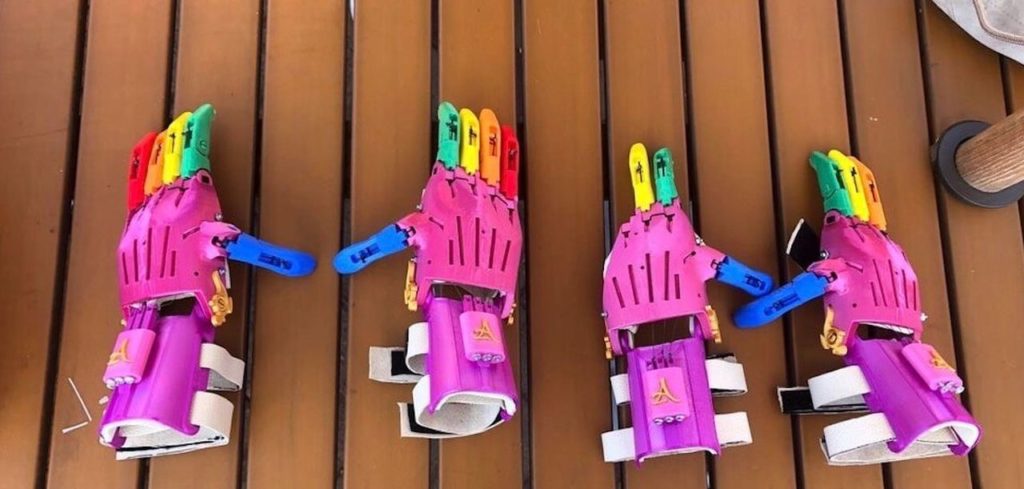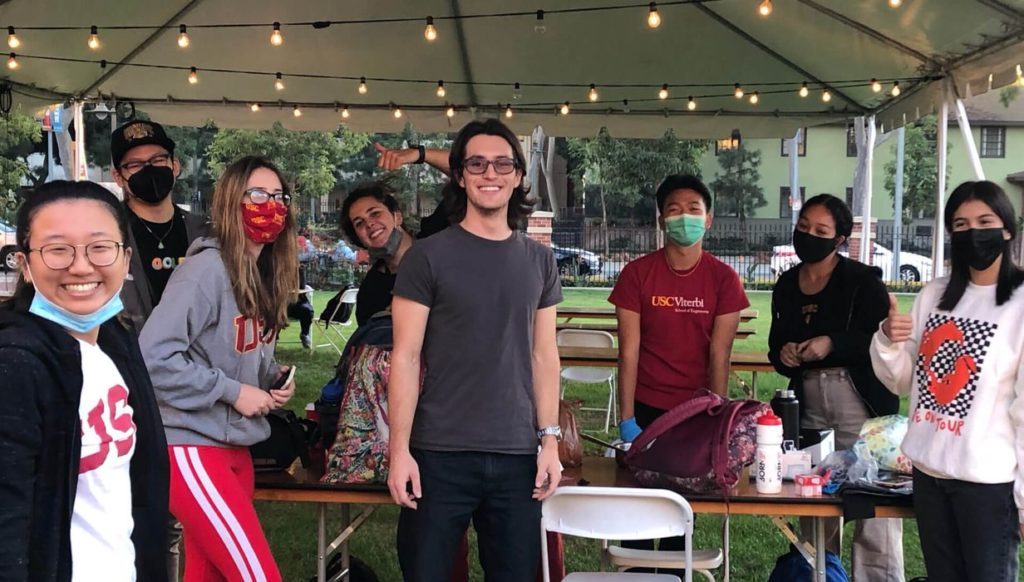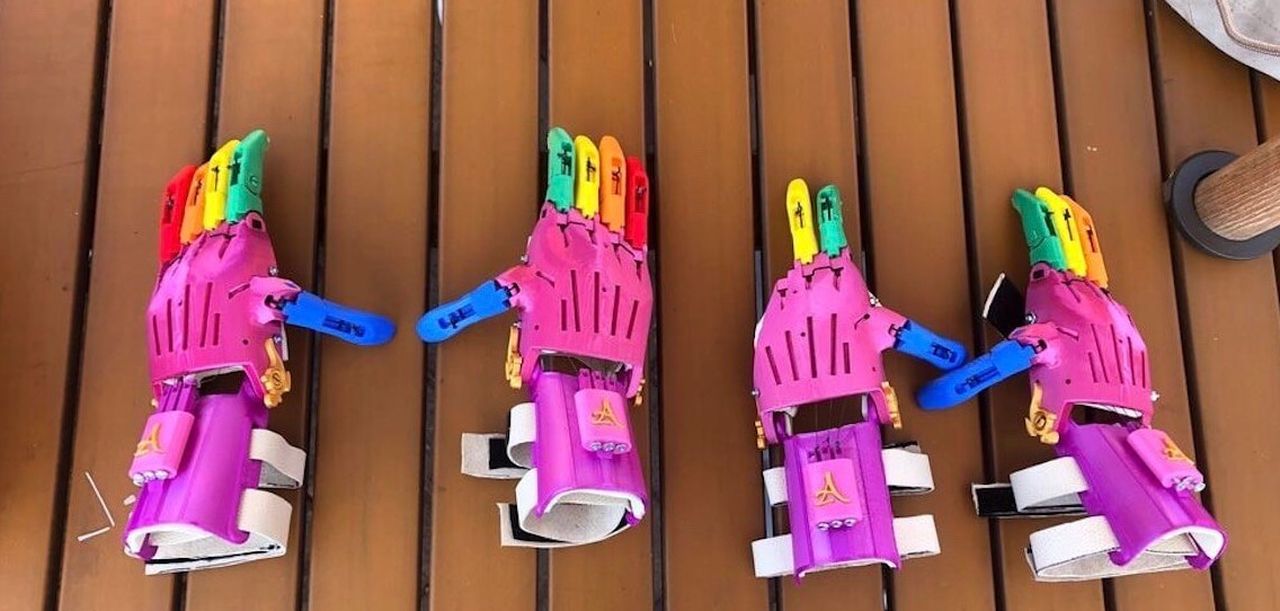
Students from USC’s engineering school are making free 3D-printed prosthetics for children through its USC 3D4E Freehand project.
Growing up comes with many challenges, and that is especially so for children born with limb differences. Considering that a new prosthetic is needed every 18 to 24 months as the child grows—the price of which may range from $5,000 to $50,000—it also creates extra burdens. Students at the University of Southern California’s Viterbi School of Engineering are working to ease that struggle and boost the confidence of these children through the USC Freehand program, which 3D prints prosthetics for free.
“The goal of our prosthetics is not necessarily to be a replacement hand but more of a confidence-builder for these kids,” said Brendan Kim, USC Viterbi School of Engineering sophomore and member of USC Freehand. “Growing up with a limb difference can be challenging, especially psychologically, so we want our patients to be proud of the process. I like to think we’re setting them up for bigger and better things.”
Part of USC’s 3D4E organization, Freehand works directly with children in the Los Angeles area via a partnership with the Children’s Hospital of Los Angeles (CHLA). Dr. Nina Lightdale-Miric, CHLA director of Pediatric Hand and Upper Extremity Surgery Program and “CATCH” Hand Differences Program founder, helps coordinate bringing the children and students together.

Member students of USC Freehand. L to R: Irene Li, Edwin Tieu, Jenna Matus, Clare Haas, Kian Jeshion-Nelson, Brendan Kim, Keyvette Tabb and Ariana Garcia. (Image courtesy of USC Freehand.)
Freehand focuses on children ages 3 to 10 on a case-by-case basis. Every semester, approximately 10 USC students begin full evaluations to determine the specific needs of the child. Typically, they create two to three prosthetics for the patients. Before that happens, a lot of work is required behind the scenes.
First, the student team consults with a child and their family, during which exact measurements of the hand dimensions are taken. This includes specific physical characteristics so that the team is able to modify or scale the design down the road. The child also gets to customize the design by choosing from various colors and artwork.
“A child might have his wrist and palm formed, but the fingers didn’t fully develop from there. The prosthetic could work by flexing the wrist,” Kim said. “Or there maybe be no wrist presence, but they do have a fully formed elbow, so we’d connect the prosthetic to the bicep to gain leverage to open and close the fingers by activating the elbow.”
After the consultation, the team gets to work creating a virtual design of the prosthetic using CAD software. Enabling the Future, which is dedicated to the promotion and distribution of 3D-printed prostheses, provides the 3D model files. The students are able to edit the files to add and scale elements, such as superhero artwork, to ensure they fit.
Read more at ENGINEERING.com

